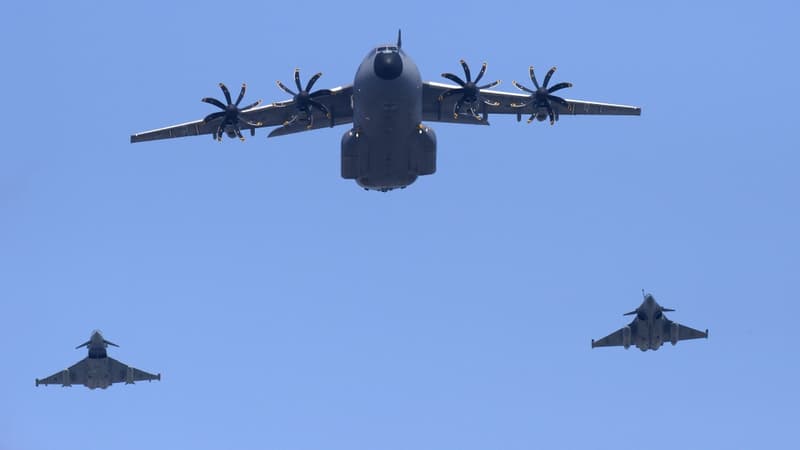There were three in 2014, 10 in 2023, 18 in 2024 … in 2025, 31 of the 32 NATO member countries (Iceland does not have a dedicated budget) that will have reached or exceeded the 2% threshold of GDP dedicated to defense efforts, according to the latest estimates of the Atlantic Alliance.
Only one third of the countries will exceed the 2.5% threshold by 2025, indicate NATO calculations. Best student in the ranking, Poland will dedicate 4.48%of their GDP to defense expenses, ahead of Lithuania (3.99%) and Latvia (3.73%). This upper trio is closely followed by Estonia (3.38%), Norway (3.35%), then the United States (3.22%). France simply passes this 2% limit that had been established in 2014 and the limits to 2.05%.
Military expenditure in all NATO countries should be more than $ 1,500 billion by 2025, a constantly higher amount since 2015.
Objective: 3.5%, plus 1.5% of “annexes” expenses
It is a first walk towards the objective of 3.5% of GDP dedicated to strictly military spending, announced at the NATO summit last June, but the budget effort remains important. Of the 32 countries of the Alliance (less Iceland, therefore), only three countries reach the objective of 3.5% (Poland, Lithuania, Latvia), and for most other countries, the march is high, despite a geopolitical context that leads to military investments.
Commitments assumed by NATO member countries during the June Summit also plan to assign 1.5% of GDP with “annexed” expenses, which are related to security in the broad sense, including critical infrastructure, cybersecurity, etc.
Italy tries, for example, pass the construction of a bridge over the Messina Strait as a defense expense. In Germany, according to Der Spiegel, the Port Federation would have requested funds from the Ministry of Defense to strengthen the security of port facilities.
Some countries are more reluctant than others to fulfill the decisions taken by the members of the Atlantic Alliance: Spain, for example, welcomed this Thursday to have reached the threshold of 2%, but announces that it will not go further.
In France, the difficult equation between rearme and budgetary efforts
In France, the Military Programming Law 2024-2030 did not take into account the new OTAN objectives, but the increase in the budget of the armies –3.5 billion additional euros in 2026 and 3 others in 2027, announced by Emmanuel Macron on the eve of July 14, will allow “accelerating the butt of France in the day of turning high intensity”, describes the national review.
It remains to evaluate the impact of current political instability with respect to budget promises. An instability “that questions the ability to maintain commitments,” worried the Minister of the Armed Forces Sébastien Lecornu in his speech to meet the entrepreneurs of France, which has been held since Wednesday in Paris. “The real risk is the budget gap,” says Sébastien Lecornu.
Source: BFM TV


